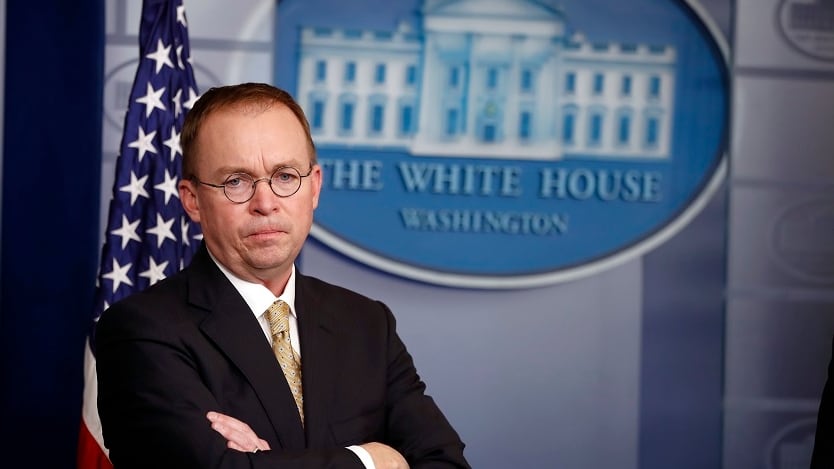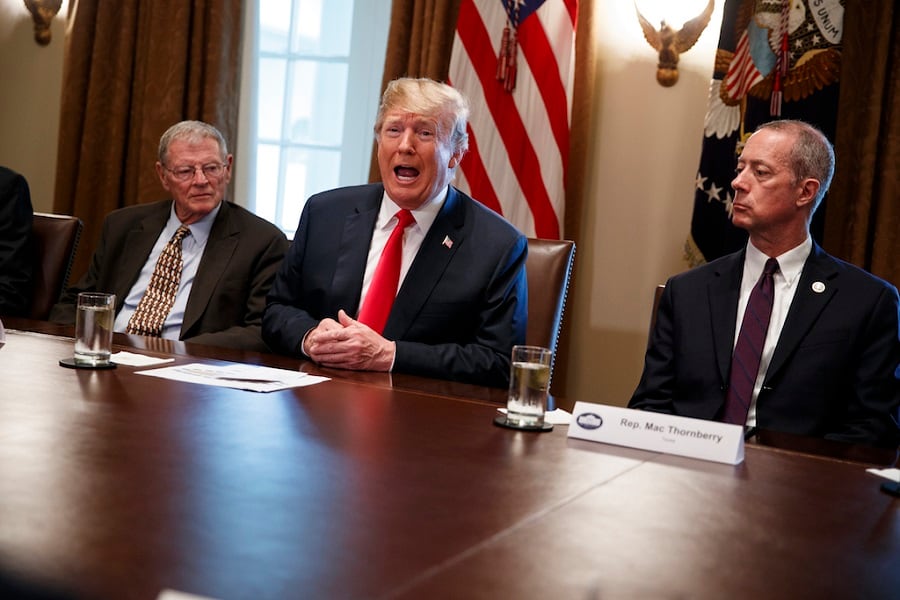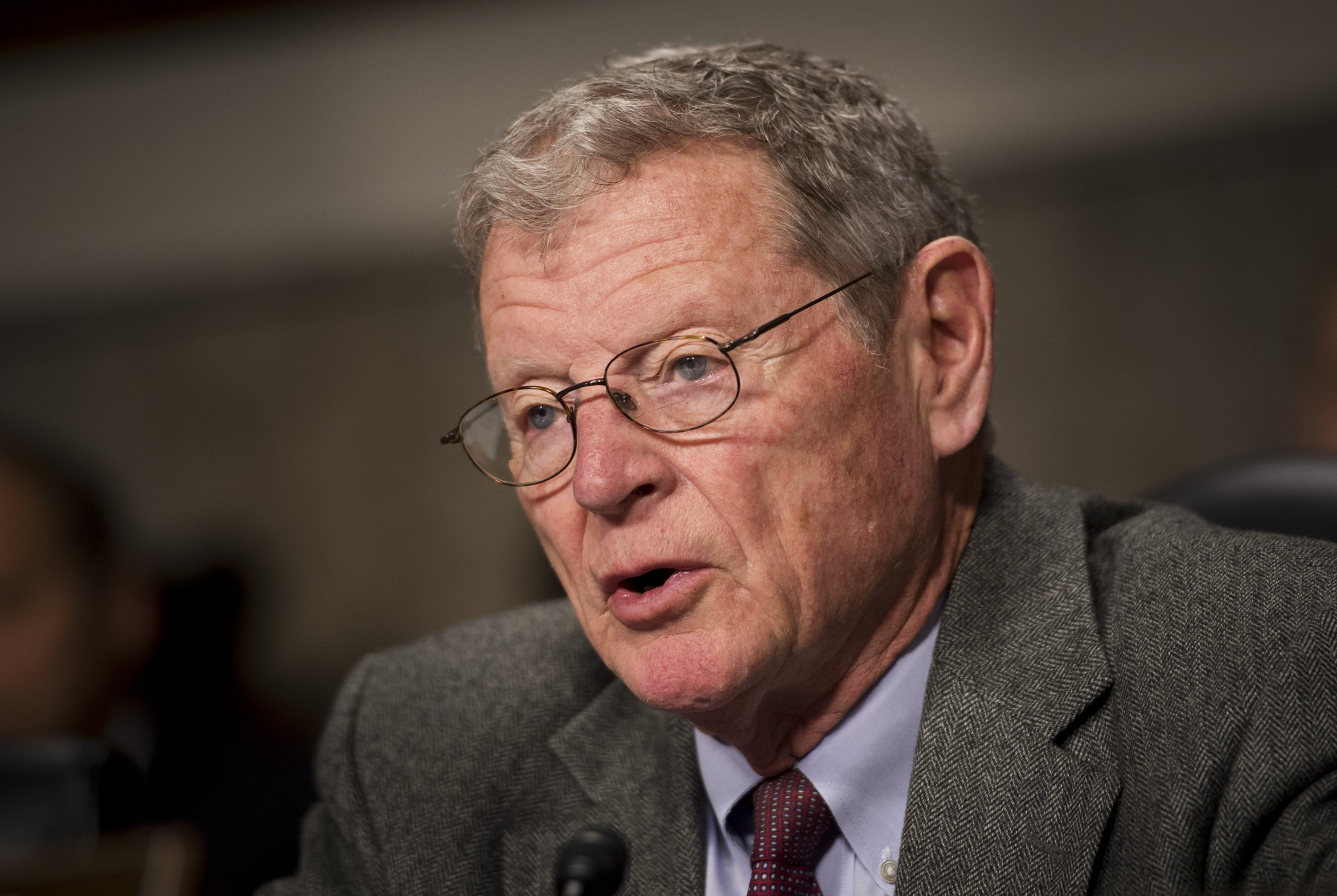WASHINGTON — The Pentagon is missing a solid budget top-line figure as it races to finalize its fiscal 2020 budget request — and while the department still expects the budget to be released on time next year, the impacts of the budget back-and-forth may echo for some time.
“We continue to work with [the Office of Management and Budget] on a top-line number,” department spokesman Chris Sherwood told reporters at the building Monday. “We don’t have a top-line number yet.”
Later that day, Ellen Lord, the Pentagon’s undersecretary of defense for acquisition and sustainment, underlined that point, saying: “We’ve worked on a range of top lines, so all of the information is in, and we’re waiting to hear back. And once the president says what the budget is, we will be right there with it.”
The department had been planning for most of the year to a $733 billion top-line figure, until the moment at an October Cabinet meeting when President Donald Trump announced the figure would be $700 billion.
RELATED

That number, delivered close to the planned budget finalization date of Dec. 1, sent planners into a frenzy as they attempted to develop a pair of budget offerings matched to both levels. The situation changed again when, following a meeting with Defense Secretary Jim Mattis and congressional defense leaders, Trump reportedly boosted the budget to $750 billion.
Even without a final figure in hand, the department continues to drive toward a Feb. 4 planned release date of the budget. And while the Pentagon is certainly not going to complain about a budget increase, the yo-yo effect naturally has impacts on both the long-term planning process and the people who have to create the annual budget.
Gordon Adams, a budget expert who spent several years overseeing defense budget planning during the Clinton administration, is skeptical that the $750 billion figure will come to fruition given the opposition from Democrats in Congress and the existence of the Budget Control Act. But he said he doesn’t envy the planning team that has to keep up with the back-and-forth figures.
“These guys have planned to $733 billion, and they were busy. It’s pretty disruptive this late in the game to figure out what you will pull out to get to $700 billion. It’s virtually impossible to fill the bucket to $750 billion in any meaningful way,” Adams said. “As a planner, you’re whipsawed because you have to produce paper. You have to produce some justification of the number. Plus, $50 billion is a big whipsaw — even by Pentagon standards.”
“Major changes late in process add work and leave less time for careful review,” added Bob Hale, a former Pentagon comptroller and now senior executive adviser at Booz Allen Hamilton.
“These late adds mean a lot of work for resource management people,” Hale said. “I used to call the comptroller job a ‘Grinch job’ because the pace was frenetic when everyone else was celebrating.”
Susanna Blume, a former Pentagon official now with the Center for a New American Security, agreed there is probably a “high” level of chaos in the budget offices with the swings. But, she said, there is a way to deal with it using work that has been done for most of the year.
“I think at this stage in the game, it’s more likely that they’re doing excursions from the baseline rather than building a totally separate submission from the ground up,” she said. “The former is easier than the latter.”
RELATED

What happens next?
Hale noted that the timing of the dollar adjustment means the services will have “only a little time” to respond to the changes, with OSD then guiding what does and doesn’t make the cut.
As to what might win out in a budget increase, “I suspect that adds will favor R&D and procurement, but a rising tide always tends to lift all boats — at least a little,” Hale said. “It is also possible that OMB will push for using some of the added funds above $733 billion to transfer some base-budget functions now funded in [overseas contingency operations] back into the base.”
Adams raised concerns that the services will look at this jump as the new norm, instead of an irregularity, and bake in assumptions that can’t stand up to reality in the five-year outlook known as the Future Years Defense Program, or FYDP.
“The danger in a $750 billion number — always — is the services expect that number to be real, and over time they start planning out a FYDP to match the number," Adams said. “That’s where you get in real trouble. If this number is just mythological, and you write a FYDP to conform to that number, your out-year assumptions are shot to hell. And that’s a planners’ nightmare.”
RELATED

The budget experts all agreed there is a natural back-and-forth that happens during every budget cycle: The Pentagon pushes for more funding, OMB pushes back and the president makes the final decision.
“The fight in the White House is always about the top line — always, always, always,” Adams said. “That’s the one issue that always gets held over to the last minute. It’s the one issue the president eventually gets involved in. Every other issue slides by at the lower level.”
What has set this year apart has been the public nature of those talks — driven first by Trump’s statement in front of cameras that defense would take a cut, and then by a cavalcade of leaks following the president’s meeting with Mattis and the congressmen.
“Generally, these negotiations would happen behind closed doors in order to preserve decision space for the president in his budget request,” Blume noted. “However, President Trump opened the door to a public discussion by publicly announcing a potential reduction to $700 billion, and the secretary and other senior officers and defense officials have followed his example in making public comments.”
For the people inside the building, there is hope the back-and-forth will lead to a dollar figure that sticks — sooner rather than later.
In the meantime, Lord perhaps summed up the Pentagon’s position best.
“We listen to the president, and we respond to the White House,” she said. “Other than that, it’s interesting, but irrelevant.”
Joe Gould in Washington contributed to this report.
Aaron Mehta was deputy editor and senior Pentagon correspondent for Defense News, covering policy, strategy and acquisition at the highest levels of the Defense Department and its international partners.





